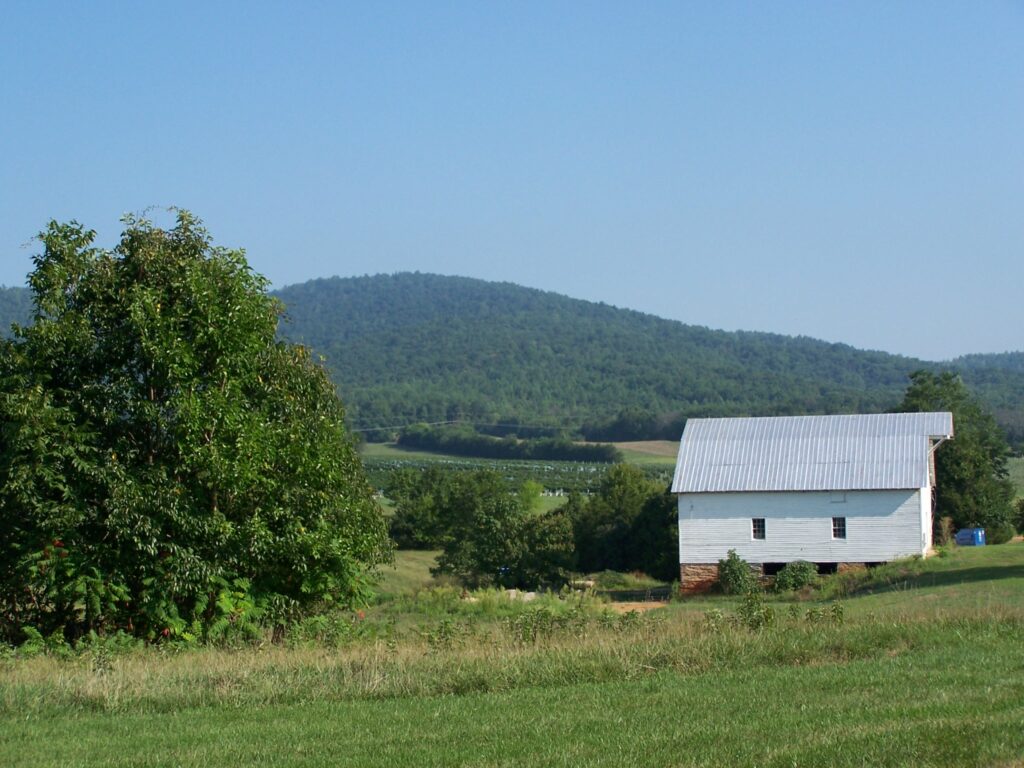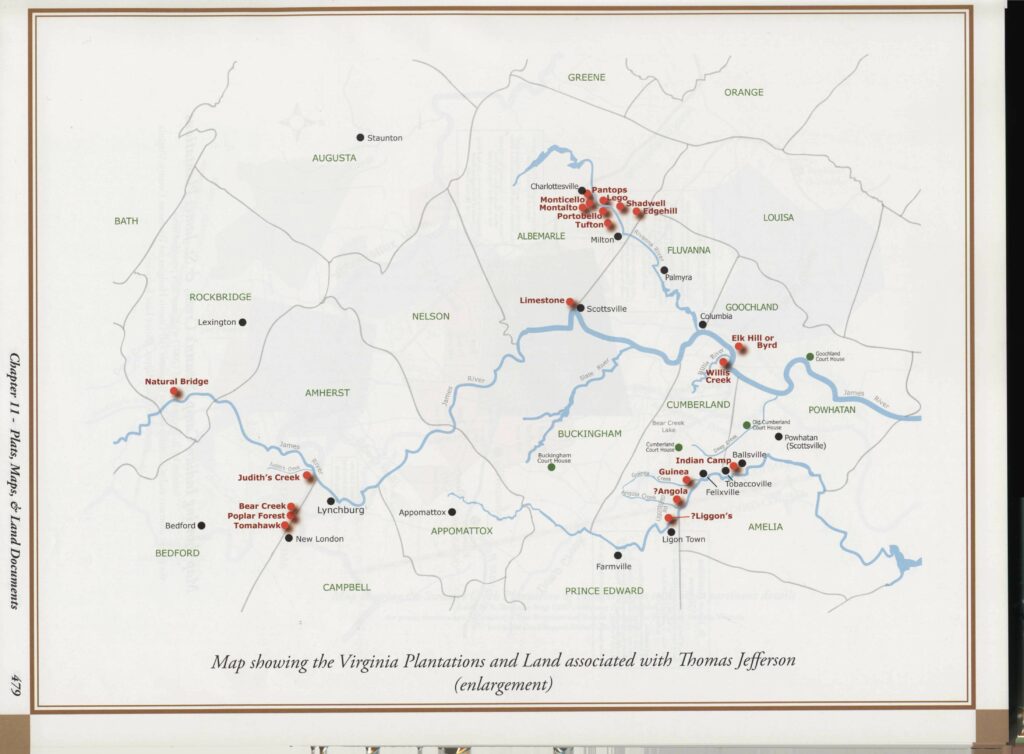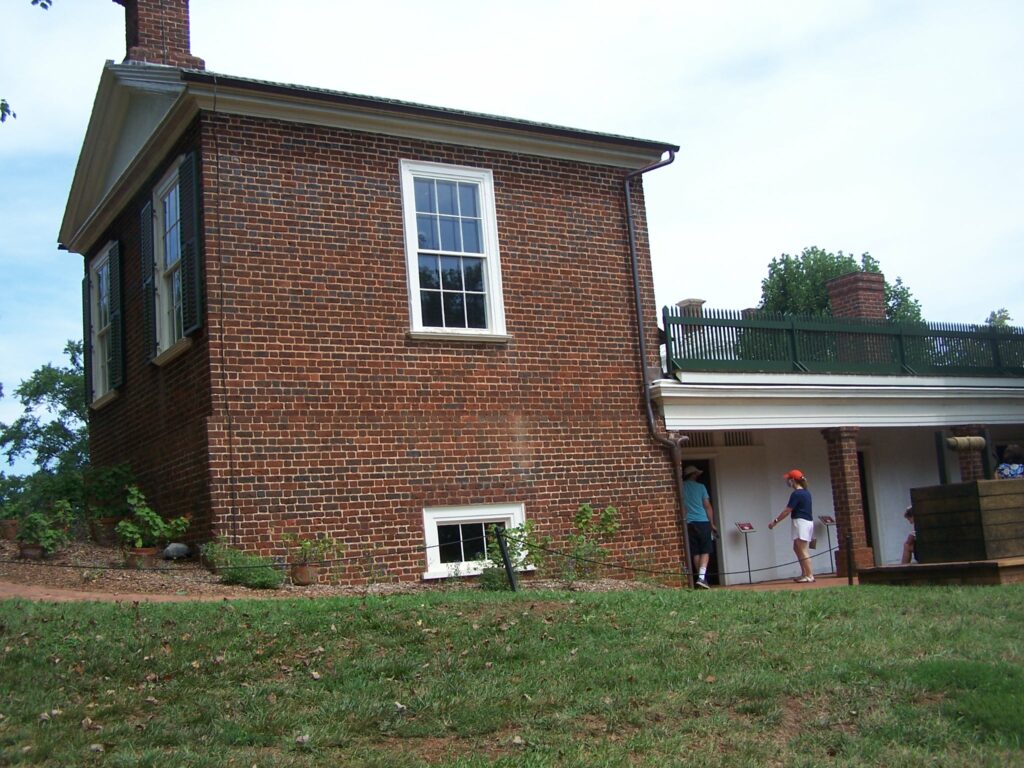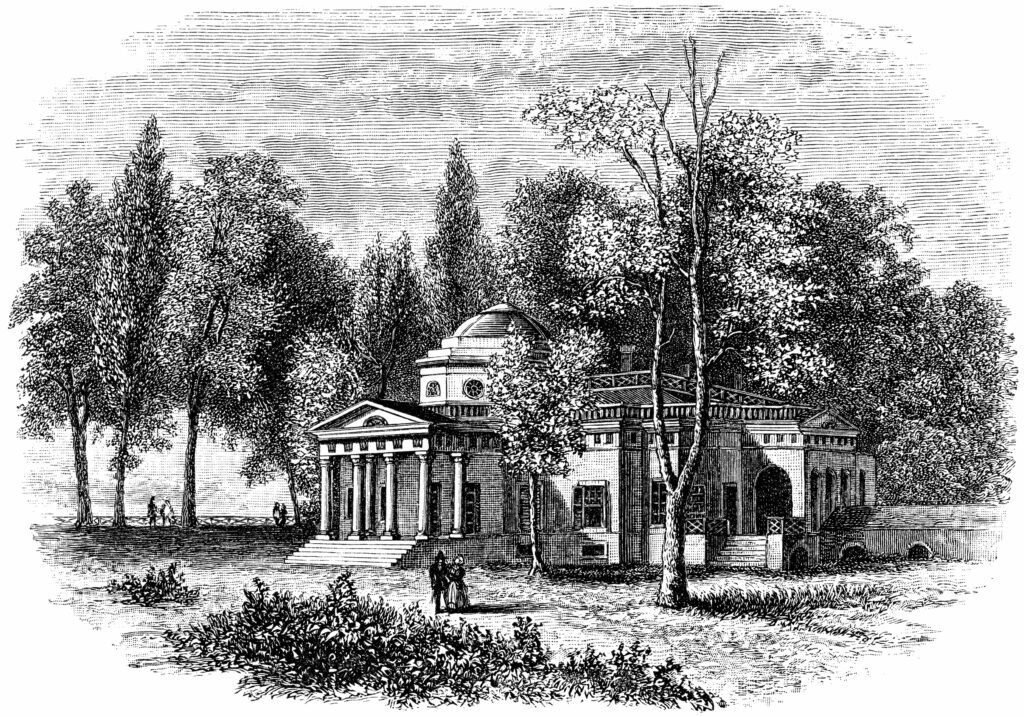Reflections on my time at Monticello and teaching resources
By Sue Kozel, NJREA Member
Many of us who have taught American history think about how such beautiful and revered historical sites can also be ones where horrible acts occurred. Monticello, the picturesque plantation of Thomas Jefferson in Albemarle County, Virginia is one example. The Enlightenment thinker and key author of the Declaration of Independence forced over six hundred individuals into enslavement over the course of his life. Students join me in considering how the man who wrote about “life, liberty, and the pursuit of happiness” could also have owned slaves.
During my one-month fellowship, I lived across the highway from Monticello, about two minutes away by car. I was struck by how the enslaved people made Jefferson his wealth in tobacco, nail, and other operations at Monticello and his other plantations in Albemarle, Bedford, and Campbell counties. My fellowship occurred thanks to Peter Onuf, the Thomas Jefferson Foundation professor emeritus of history at the University of Virginia, and Jonathan Mercantini, the acting dean of the College of Liberal Arts Kean University Acting Dean.

Sugar Loaf Mountain, Albemarle County, the site of an early Quaker Meeting House formed by Christopher Clark. Across the valley from the mountain was a set the unmarked graves of enslaved African Americans. Photo by Sue Kozel.
My interest in Monticello concentrated on learning more about several Quakers and former Quakers disowned by their religious meetings who Jefferson employed at his slave plantations. Quakers are often considered abolitionists, and I wanted to understand why some Quakers and former Quakers would work for an enslaver like Jefferson.
It appears, from my research, that 17 of Jefferson’s 28 slave overseers may have had Quaker relatives. While researching at the International Center for Jefferson Studies and in the Jefferson Library, I thought it might be helpful to K-12 teachers to have access to some thoughtful and factual resources. Including lesson plans that explore race, equality, freedom, and family to enhance lessons taught in social studies classes.
Jefferson inherited some of his slaves, purchased others and sold some. However, as the enslaved person had children and grandchildren, he ultimately owned over 600 slaves in his lifetime. See “Monticello – Slavery FAQ – Property.”
Below, you will find oral history interviews with descendants of enslaved families at Monticello, primary documents, links to writings by formerly enslaved persons at Monticello, and rich lesson plans, with an emphasis on the people of Monticello plantation, comprising 5,000 acres. I have also included resources that will connect readers to Jefferson’s Poplar Forest, which comprised 4,800 acres. The map on Page 27 shows teachers and students how vast the Jefferson landholdings were, and in turn, many as locations for enslaved people.
Professor Annette Gordon-Reed, author of the Hemings of Monticello: An American Family and the Carl M. Loeb university professor at Harvard University, sees value in turning to Monticello as teachers discuss race in the United States.

“Monticello—the home of Thomas Jefferson, the principal author of the American Declaration of Independence and the site of enslavement of hundreds of African Americans over decades— is the perfect venue from which to launch a discussion of the development of attitudes about race in the United States,” said Gordon-Reed.
Renowned Thomas Jefferson expert Peter Onuf agrees.
“Over the last generation, Monticello, Thomas Jefferson’s hilltop home, has taken the lead in promoting new scholarly and pedagogical perspectives on slavery, race, and freedom in the formative years of American history,” Onuf said. “With access to the best new research on Jefferson and the enslaved community at his Piedmont plantation that Monticello’s Robert H. Smith International Center for Jefferson Studies now affords, teachers and students can gain a deeper understanding of the new nation’s revolutionary promise, its limits, and its enduring legacies.”
The Getting Word Project
Andrew Davenport, public historian and manager of the Getting Word Project, a project conducting oral histories from descendants of enslaved families at Monticello, welcomes NJEA members to draw on the rich resources at Monticello.
“As a former middle school and high school teacher, I am thrilled to invite New Jersey public school teachers to learn more about Monticello’s Getting Word African American Oral History Project, which will be in its 29th year in 2022,” Davenport said. “Getting Word preserves and documents the family histories of hundreds of descendants of people enslaved by Thomas Jefferson at Monticello. Getting Word is an archive of freedom because it traces the family histories of those who were once enslaved through the joys and challenges of freedom in the century and a half since the end of the Civil War and the abolition of slavery in 1865. Descendants’ willingness to share their stories with younger generations of Americans, your students among them, is proof that oral history is one example of ‘how the word is passed down,’ as one Getting Word participant has said.”
While at Monticello, I met with Krystal Gladden, manager of School Programs, Melanie H. Bowyer, manager of Digital Media and Strategy, and Carrie Soubra, Digital Learning coordinator. This team works with teachers to make virtual visits possible and share free lesson plans and primary sources, some of which are listed below.
Gladden invites NJEA members to visit the extensive classroom resources for lesson plans and teaching ideas. Below are resources that open to examples including Jefferson’s enslaved family, the Declaration of Independence, and life for the enslaved at Jefferson’s plantations.

Follow @TeachMonticello
Research and Education for educators
monticello.org/research-education/for-educators
Digital Education Resources and Lesson Plans
Reflections
As I reflect on the experience at Monticello it was one of the most meaningful in my life. I felt the tensions between understanding enslavement and freedom as I listened to visitors react to the Sally Hemings Exhibit and of her possible room location in the South Wing of Monticello. Not all visitors were happy about this space with some complaining about the emphasis on slavery on Monticello.
I drove around Albemarle County to President James Monroe’s Highland Plantation, where only one enslaved person was ever freed (See bit.ly/3ztX70D and highland.org/highland-and-slavery) and then to nearby Orange County and President James Madison’s Montpelier Plantation where no slave was ever freed (bit.ly/3sWwIaN). I was struck by this epicenter of Virginian political power, with three presidents living near each other. Each had slaves. Each made condemnations of sorts, excuses, supported colonization of enslaved and/or free blacks to Africa, but ultimately would not free their full group of enslaved people.
I think of Gabriel’s Rebellion and the slaves that attempted to revolt for freedom (bit.ly/3t1boAY), then-Governor James Monroe’s fears, and the changing Black Codes (bit.ly/3HEajmB) that further restricted the movement of both free and enslaved African Americans in Virginia.
In the case of Thomas Jefferson, the Monticello website succinctly summarizes his choices under the question, “Did Jefferson free anyone he enslaved?” The website reads: “Yes. Thomas Jefferson freed two people during his life. He freed five people in his will. He allowed two or three people to escape without pursuit and recommended informal freedom for two others. In total, of the more than six hundred people Jefferson enslaved, he freed only ten people—all members of the same family.” (See “Monticello – Slavery FAQ – Property” at bit.ly/monticello-1.)
Finally, Poplar Forest represented a wealth generating plantation for Jefferson, and tobacco was a key crop. To learn more about these enslaved families, see bit.ly/poplar-1. To read a Jefferson list noting the names of enslaved people in 1811-1812 written in Jefferson’s hand in Poplar Forest, see bit.ly/poplar-2.
One of the most moving experiences I had was visiting a little-known cemetery for the Clark family, which had ancestors who knew Jefferson and who possibly worked for him. Looking from the Sugar Loaf Mountain where one of Virginia’s first Quaker meeting houses was founded by slave owner Christopher Clark, was an unbroken forest of pine. About 20 minutes from Monticello, I met a guide, we hopped in his Kubota and drove down a narrow dirt path to a silent and lonely space.
A lone child’s gravestone was present, and it was explained to me that the stone was facing what was thought to be an unmarked gravesite of several African American enslaved people beyond the child’s fenced in grave. I had seen a picture of how the snow covered the land and then showed that rectangular spaces sunk under the snow. I cried. No one remembered, but someone did.
The knowledge of the unmarked graves existed. It is the loss of life, the loss of opportunity, and the loss of “life, liberty, and the pursuit of happiness” that stirs my heart. That is the legacy of slavery-the loss of so many for the greed of others.
Sue Kozel was a 2021 Fellow of the International Center for Jefferson Studies, which is affiliated with Monticello. Prior to her retirement, she worked at several New Jersey higher education institutions where she taught a variety of courses including New Jersey history, American History, African American history, World History, and Western Civilization.
Kozel is a proud NJREA member and has dedicated her research to answering uncomfortable questions about power, slavery, and freedom.
Sally Hemings’ and Thomas Jefferson’s descendants
In Monticello’s resource page on slavery, Madison Hemings, one of Jefferson’s enslaved children with Sally Hemings, wrote about how differently he was treated by his father, Thomas Jefferson, and how Jefferson interacted with his white children.
“He was not in the habit of showing partiality or fatherly affection to us children,” Madison Hemings reflected. “We were the only children of his by a slave woman. He was affectionate toward his white grandchildren, of whom he had fourteen, twelve of whom lived to manhood and womanhood.”
Madison Hemings’s writings present an eyewitness window from one of Jefferson’s African American children and provides us with an opportunity to think about the role of family, or not, in an enslaved community. As published in the Pike County Republican, March 13, 1873, he described how some of his siblings passed for white because of their light skin and chose to marry into white families while others identified as African American.
Thomas Jefferson’s father-in-law, John Wayles, was a slave trader. (See bit.ly/3JIkyrY). Wayles was the father of Jefferson’s wife, Martha. He was also father of enslaved woman and half-sister to Martha, Sally Hemings, who was inherited by Jefferson after his wife’s father died, and the property—human and land—passed to Jefferson.
Madison Hemings discusses his enslaved grandmother, Elizabeth, and life with his siblings in this extraordinary writing. See –“Recollections of Madison Hemings at bit.ly/monticello-10.
Bibliography of resources on slavery
For a great resource describing books on slavery at Monticello, see bit.ly/monticello-11.
Some thoughtful lesson plans from Monticello Digital Classroom
Empire of Liberty or Empire of Slavery bit.ly/monticello-3
Jefferson and Washington: The Pursuit of Happiness bit.ly/monticello-4
Monticello, the Slaves who gained their Freedom bit.ly/monticello-5
Sally Hemings, An Enslaved Household Servant bit.ly/monticello-6
The Lives & Experiences of Enslaved Laborers at Monticello bit.ly/monticello-7
Lesson plan created by NJ Teacher Molly McCullough
“The Aftermath of Gabriel’s Rebellion: Jefferson and The Reaction of Virginia to The Slave Conspiracy Of 1800” bit.ly/monticello-8
Image on the Monticello Classroom site is an image
Enslaved people serving President James Madison, his wife and children, Jefferson, and some of his white grandchildren. bit.ly/monticello-9
Getting Word African American Oral History Project
Great links for the Getting Word African American Oral History Project are numerous. Visitors will be able to connect to the stories of the descendants of Monticello’s enslaved community, life after enslavement, introduce descendant’s Civil War heroes, and address Jim Crow and the Color Line realities, just some of the many topics discussed. Here are places to start.
monticello.org/getting-word/stories/stories
monticello.org/getting-word/stories/fighting-freedom-and-equality
Monticello’s Getting Word Oral History Program provides visitors with reflections from the descendants of enslaved people living on Jefferson’s slave plantations, including his African American children with Sally Hemings.
Eston Hemings: bit.ly/eston-hemings
Madison Hemings: bit.ly/madison-hemings
Beverly Hemings: bit.ly/beverly-hemings
Harriet Hemings: bit.ly/harriet-hemings
